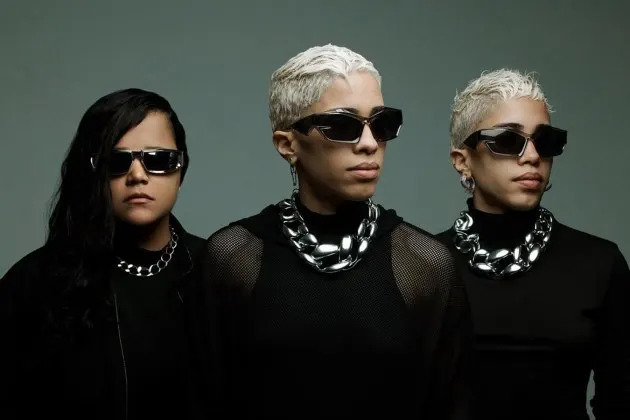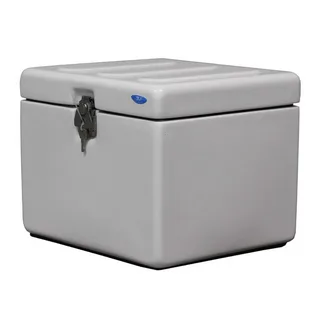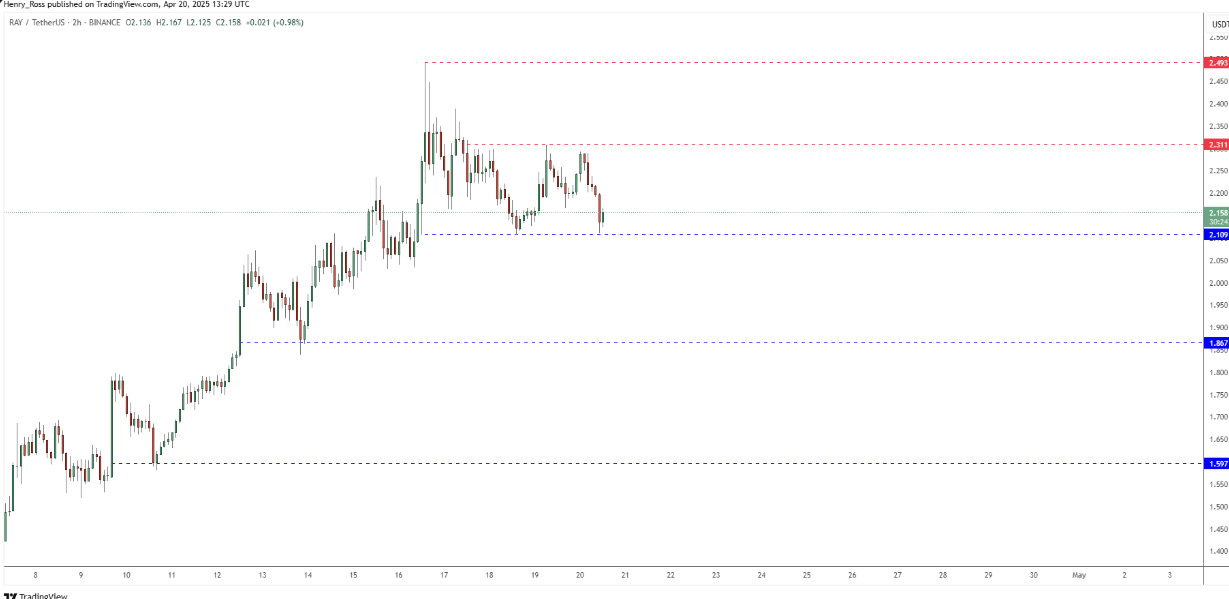Welcome to MULA’s Electro-Merengue Utopia
 Yahoo is using AI to generate takeaways from this article. This means the info may not always match what's in the article. Reporting mistakes helps us improve the experience.Generate Key Takeaways
Yahoo is using AI to generate takeaways from this article. This means the info may not always match what's in the article. Reporting mistakes helps us improve the experience.Generate Key Takeaways Credit: andreapm/kikediaz
Credit: andreapm/kikediazIn recent years, merengue has become Latin pop’s secret weapon. The Dominican Republic’s signature gallop has crept into global smashes from Bad Bunny and Karol G, heralding a revival of the genre’s swinging Eighties and Nineties heyday (though rarely crediting its century-old campesino roots.)
Admittedly, the house that merengue built fell into disrepair in the new millennium, due to stubborn gatekeeping from industry stalwarts, as well as a zeitgeist pivot towards dembow and urbano trends. But that’s not to say merengue vanished from the Dominican lexicon; a resurgence of accordion-led típico launched glossy stars El Rubio Arcordeón, El Blachy, and Urbanda, while cheeky dembow crossovers produced viral hits for Nelly Swing and Chimbala. At an indie level, merengue also proved pliable, merging with metal and industrial riffs in psychedelic epics from Gallo Lester and Mediopicky, and providing a sinewy canvas for the poetic soul-searching of Rita Indiana and Xiomara Fortuna.
More from Rolling Stone
'Eight Hours Under Rubble': Details Emerge in Dominican Republic Nightclub Tragedy
Rubby Pérez, Merengue Singer, Dead at 69 Following Nightclub Roof Collapse in Dominican Republic
The Dominican Republic Is Revitalizing Merengue Típico. The World Is Following Its Lead
AdvertisementAdvertisement#«R16ekkr8lb2m7nfddbH1» iframe AdvertisementAdvertisement#«R26ekkr8lb2m7nfddbH1» iframeAnd then there’s the rhythmic fantasia of MULA.
Flourishing at all the aforementioned intersections, the trio of Rachell Rojas and twin sisters Cristabel and Anabel Acevedo have defied classification for a decade. Hailing from Santiago de los Caballeros — the “Ciudad Corazón” at the center of the country’s rural Cibao region, and the cradle of merengue — MULA’s mastery of Dominican percussion has mutated and sharpened across four sprawling LPs. The songs are often a cornucopia of staccato güiras and digital reggaeton drums waltzing through dancehall, dubstep, and bachata in the 3-minute run of an average pop song. But there’s nothing average about MULA, and their new album, ETERNA, blasts these alchemic blends with darkwave, shattering temporal constructs of nostalgia and futurism with a tropi-goth sound for all seasons. And yet, despite high concepts of virtual reality and roaring international fanbases, the magic of their triumvirate stems from the simple, quotidian joys of island life.
“Merengue was the sound of birthday parties,” Cristabel tells Rolling Stone, reminiscing on childhood marquesina dance pits soundtracked by Fefita la Grande and Los Hermanos Rosario. “Even though we grew up as Jehovah’s Witnesses and weren’t allowed to celebrate, our neighbors always played music and we soaked it up. Our dad is from Jacagua, where típico is king, so that influenced our creative DNA.”
Before MULA’s throbbing hybrids came to fruition, Cristabel and Anabel rose to prominence in the early 2010s as folky blogosphere darlings, Las Acevedo, taking their self-described “picnic pop” to Spain, Brazil, Colombia, and the United States. In 2014, Rojas — who’d spent two years in Argentina studying music production and sound engineering — returned to the Dominican Republic with a music library chock-full of dubstep and drum-and-bass instrumentals. The group connected after one of her DJ sets at a Santiago sushi restaurant, retreating back to a friend’s home for drinks and a nourishing “gay music video night.” Soon, they realized their creative sensibilities, though disparate, were complementary.
AdvertisementAdvertisement#«R1cekkr8lb2m7nfddbH1» iframe AdvertisementAdvertisement#«R2cekkr8lb2m7nfddbH1» iframe“We were from opposite worlds,” Rojas says of their early exchanges. “But when we found each other, with Spanglish and our mix of sounds, we understood that what connected us were Dominican-isms. Their soft voices, my acid reggaeton, and in the middle, Dominican music.”
MULA’s 2015 self-titled debut delivered a neon marriage of reggaeton and synthwave on buzzy breakouts “Playa” and “Brujas.” But it was their sophomore LP, Aguas (2017), that perfected the propulsive melange of merengue, West Indian riddims, and EDC-flavored electronica on hipster classics “Nunca Paran” and “Quiero Que Tú Quieras.” The band quickly gained a reputation as futurists, but credited their success to generational resonance rather than to innovation.
“We took reggaeton from the 2000s and fused it with the merengue that raised us,” says Cristabel. “When we played in Puerto Rico people went crazy, because it was like, ‘Oh, I can be indie and cool, but also twerk to the ground,’ which back then was still a new concept.”
Taking the stage in blonde ducktail hairstyles and rainbow accessories, MULA solidified their legacy with open queerness at a time when it was still scarce in Latin indie. Their beloved deep-cut “Espejos en la Azotea (1965)” harkened to the Dominican civil war and La Cuadrilla Chancleta, a guerrilla group composed mostly of gay and trans freedom fighters. MULA’s refusal to hide has resulted in lifelong queries about their gender-non-conformity, consistently rebutted with thick skin and acerbic Caribbean wit. And, as Cristabel quips, “The proper ‘Santiago Lady’ blouse with the cap-sleeve and skinny-pant isn’t for me.”
AdvertisementAdvertisement#«R1iekkr8lb2m7nfddbH1» iframe AdvertisementAdvertisement#«R2iekkr8lb2m7nfddbH1» iframeNever have MULA’s gender and sexuality politics been as explicit as on their new album, ETERNA, emblazoning the cover with a radioactive rainbow motif and pumping out music videos loaded with sapphic imagery. Their stacked, all-female guest list includes pop-merengue vixen Letón Pé, Argentine techno-pop producer Lucia Tacchetti, and rousing Mexican rapper Niña Dioz. For the lead singles, they chose two of their longest indie friendships: Mexican rock icon Jessy Bulbo for the witchy dance-punk scorcher “Grandes Escobas,” and Chilean pop goddess Javiera Mena on a soaring slice of gothic-merengue called “Acelero.”
“Jessy is the great love of my life,” teases Anabel, who was the protagonist of Bulbo’s 2015 hit, “Anabel.” “She’s been saying for years we should do a song together, and Rachell had a darkwave beat we thought was perfect for her. Then came Cris with the lyric, ‘Dime cómo verte cada vez que lo pido,’ (or, ‘Tell me how to see you whenever I wish’), which is everything I’ve ever wanted!”
The Acevedo Sisters met Bulbo in 2011 at the Spanish festival Viva La Canción, as part of a lineup they also shared with Mena. More than a decade later, back in Madrid, they linked up with the “Espada” singer for a quick studio session, followed by a wild night out at a Tokischa show. “I still can’t believe we have Javiera Mena singing on merengue and bachata,” adds a bewildered Cristabel.
As for the future of MULA, Rojas hints an update to their laidback island flow will inevitably manifest now that she’s living in the breakneck pace of New York City. The band is also fleshing out their stage show to feature live percussion, which she says greatly enriched the sonic impact of ETERNA. But most of all, the trio remains committed to taking up space, centering all the wild and wondrous weirdness that brought them here, today.
AdvertisementAdvertisement#«R1oekkr8lb2m7nfddbH1» iframe AdvertisementAdvertisement#«R2oekkr8lb2m7nfddbH1» iframe“After 10 years we’re taking ownership of what’s ours,” says a defiant Rojas. “We’re queer! We’re proud! It’s beautiful, and we’re putting all our weight behind that.”
Best of Rolling Stone
Sly and the Family Stone: 20 Essential Songs
The 50 Greatest Eminem Songs
All 274 of Taylor Swift's Songs, Ranked
Sign up for RollingStone's Newsletter. For the latest news, follow us on Facebook, Twitter, and Instagram.













